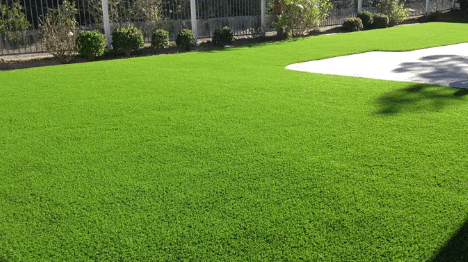What Are Suggestions For Keeping Weeds Out Of Synthetic Grass In Lakeside?

- Invest in high quality Artificial Grass will ensure maximum weed prevention and longevity of your investment. Look for products that have been treated with anti-fungal and anti-weed agents such as Polypropylene (PP) fiber which is known to repel weeds naturally, and look for product warranties that offer at least 10 years coverage against weed infestation.
- Using a weed barrier fabric layer beneath your artificial grass can effectively block weed growth. Weed barrier fabric is made of a material that prevents light and water from reaching the weeds.
- Using pre-emergent herbicides or post emergent herbicides around the perimeter of your synthetic grass will prevent new weed growth. Make sure to avoid 2,4-D and dicamba as these can damage your turf in high concentrations.
- Trimming any foliage that encroaches on the edge of your artificial grass can help keep weeds away. Make sure to remove all clippings from around the area as they may provide ideal conditions for new weeds to grow.
- Check for insects that may be harboring in the synthetic grass, as they can provide a source of food and shelter to weeds. Regularly spray insecticides or apply bait traps around the perimeter of your artificial grass.
- Weeds can grow in between the seams of two pieces of artificial grass if there is not enough adhesive or anchoring turf tape present. Make sure all seams are secure and any loose areas are re-taped with turf tape to prevent weed growth.
- Removing any organic matter such as leaves, sticks, etc., from your artificial grass will also help keep weeds away by eliminating an ideal environment for them to thrive in.
FAQ’s
What Is The Best Way To Maintain Artificial Grass?
The easiest way to take care of synthetic grass is to routinely check the seams, trim the edges of the turf, and clean up any organic material that may have accumulated. As an additional layer of defense against the development of weeds, you should also think about whether it would be more effective to apply a pre-emergent or post-emergent herbicide along the edge of your fake grass.
Can Weeds Still Grow On Synthetic Grass?
Yes, weeds are still capable of growing through the seams and cracks in synthetic grass if there are any spots where organic material has accumulated. It is crucial to keep your turf clean, correctly seal all seams with turf tape, and apply suitable herbicides around the perimeter of your turf to reduce the likelihood of weed development. Keeping your turf clean and properly sealing all seams with turf tape can help.
What Kills Weeds Permanently Naturally?
Natural and permanent weed control can be achieved through the use of a mixture of manual removal and the application of non-toxic pesticides such as vinegar, lemon juice, or baking soda. To cut down on the possibility of weeds growing through your artificial grass even further, you might want to think about laying down a fabric weed barrier first.
Do You Need Grass Maintenance For Your Synthetic Turf?
Even though synthetic turf needs less maintenance than real grass, there are still some things that should be done to keep it in good shape and make it last as long as possible. By brushing or raking the synthetic grass often, you can keep it looking good and keep the fibers standing up. This helps spread the infill material out evenly and keeps the grass from getting matted down or flattened. Leaves, dirt, and other things should be cleaned up from the turf area often. You can do this with a leaf blower, a stiff brush, or just by picking up the bigger pieces of trash by hand. If there are stains or spills, clean the area right away by following the instructions from the maker or using a solution of mild detergent and water. Infill materials like rubber granules or sand are often used in synthetic grass. These materials provide cushioning and help the turf fibers stand up straight. Over time, the filling might settle or become more dense. Using a power broom or a stiff brush to groom the grass helps to redistribute and fluff up the infill so that it performs the same way every time. Even though weeds don’t usually grow in synthetic grass, they sometimes do around the edges or where the turf meets other surfaces. Check the edges often and pull out any weeds that grow there. Also, moss or algae can sometimes grow on the grass in shady or damp places. If this happens, you can use a moss killer or brush the area with a mixture of water and vinegar to stop the moss from growing.
Conclusion
It is important to take preventative measures in order to keep weeds from invading your artificial grass. By following the tips outlined above, you can ensure that your artificial turf remains free of weeds and provides a beautiful, low-maintenance lawn for years to come. For more information, contact Artificial Grass Lakeside at (619) 493-4141.

